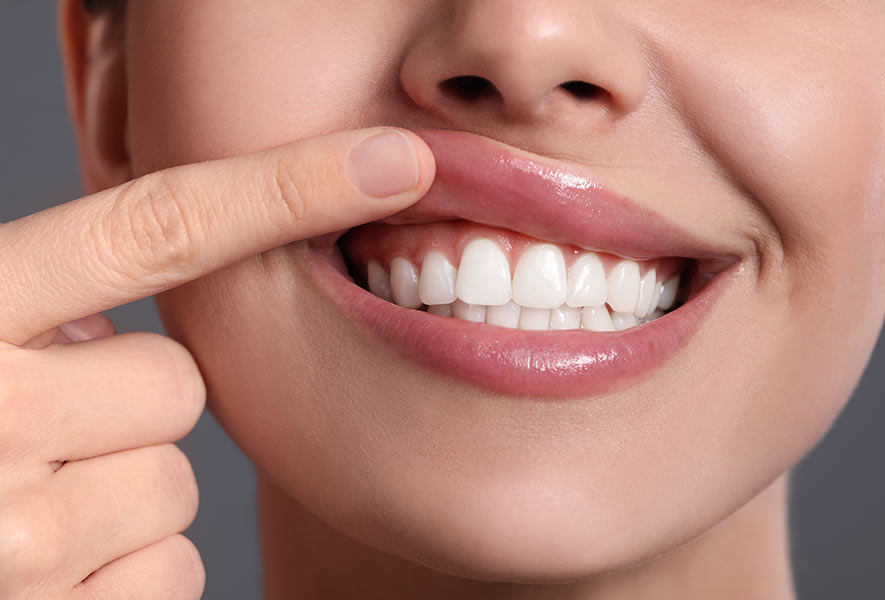
Periodontology
The periodontium is the periodontal apparatus. The most common cause of loose teeth and bad breath is periodontitis.
We offer a special program for the preservation of your teeth.
Healthy gums – strong teeth
If the periodontium is healthy, the gums are light pink and firmly attached to the tooth. The teeth are firm and the gums are not inflamed.
We use the Periodontal Screening Index during your annual check-up to determine whether your periodontium is healthy.
If the gums are inflamed and there is a lot of superficial and deep tartar under the gums, the teeth are often more mobile and the gums are dark red or appear darker. By carefully removing the deposits in the gum pocket and adapting the oral hygiene at home to the changed situation, the gums heal and the teeth become firmer again. Along with the inflammation, accompanying symptoms such as bad breath and bleeding gums also disappear.
If the teeth are then cleaned at regular intervals after the treatment to keep the hard-to-reach areas clean, the oral situation remains stable.
Frequently asked questions
You are to undergo periodontitis therapy:
1. when does it start?
As soon as your insurance company has approved the costs, treatment can begin.
2. what is being done?
The root surfaces and pockets are cleaned. We use hand instruments and sonic scalers for this. If you have a pacemaker, please let us know before the treatment, as not all types of pacemakers allow the use of sonic scalers. No gums are cut off, but the cleaning is carried out in the same way as with professional tooth cleaning, only cleaning the root surface deeper down to the fundus of the gum pocket.
3. is the treatment painful?
The sensation of pain varies greatly from person to person and depends on the condition of the gums. If the discomfort is already unpleasant before the treatment, anesthesia is necessary.
You can, of course, be given anesthesia at any time or choose to reduce the sensitivity of the gums with a surface anesthetic gel.
4. do I need to pay attention to anything after the treatment?
The treatment allows bacteria to enter the bloodstream and activates the immune system. This can make you feel unwell on the day of treatment. This depends on how healthy you are and how inflamed your gums were before the treatment. It is best to simply allow yourself a little rest to recover from the treatment.
The gums are often somewhat sensitive and react sensitively to conventional oral hygiene. We recommend a CHX cure after periodontal treatment.
5 What follow-up checks are necessary?
After one week please come for a check-up.
In addition, the teeth are stained to check that the teeth have been cleaned, as only a clean tooth neck can result in healthy, healed gums.
After 3 months, the pockets are measured again and compared with the initial values.
6. what can I do to keep my gums and periodontium healthy?
We will arrange the appointments prescribed by the statutory insurance company with you after the 2nd check-up appointment.
You can help to improve your gum situation once again:
Oil pulling
helps your gums to regenerate and also removes harmful bacteria. To do this, use 1 teaspoon of cooking oil and drag it through your interdental spaces. Rinse for about one minute. The best results are achieved with daily use.
Chlorhexidine treatment
Brush your gums and teeth with a toothbrush and/or interdental brushes using the chlorhexidine gel instead of toothpaste for 1 week at a time. Do not rinse afterwards. Then take a 3-month break from using the gel. Then repeat the gel application for another week and take another 3-month break. Repeat the sequence described above a total of 6 times.
Contact us
Dr. Christina Meuer | Dr. Thomas Meuer-Dabrowski
Hauptstraße 26 | 82226 Seefeld
Phone: 08152 79646
Fax: 08152 980880
Opening hours


